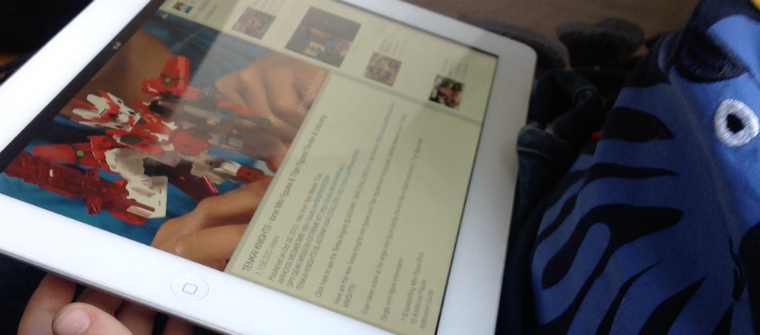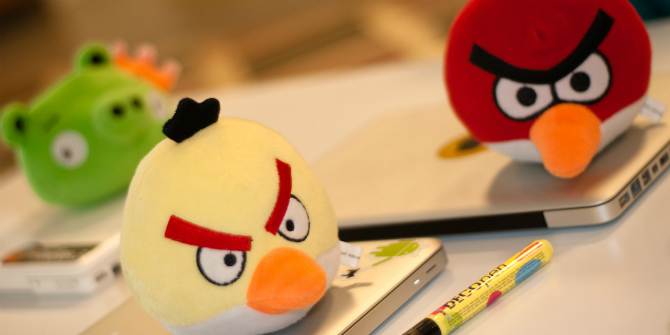 As kids seem to be leaving Facebook, they turn to a range of other social media platforms. Sonia Livingstone discusses the latest research findings on which sites are safe and what more can be done to make them safe. She urges parents to talk to their children, but says it is time that policy makers keep an eye out for families. Sonia is Professor of Social Psychology at LSE’s Department of Media and Communications and has more than 25 years of experience in media research with a particular focus on children and young people. She is the lead investigator of the Parenting for a Digital Future research project.
As kids seem to be leaving Facebook, they turn to a range of other social media platforms. Sonia Livingstone discusses the latest research findings on which sites are safe and what more can be done to make them safe. She urges parents to talk to their children, but says it is time that policy makers keep an eye out for families. Sonia is Professor of Social Psychology at LSE’s Department of Media and Communications and has more than 25 years of experience in media research with a particular focus on children and young people. She is the lead investigator of the Parenting for a Digital Future research project.
A report just released by the Internet Watch Foundation found that some of the sexual images posted by children online, whether voluntarily or under pressure, are being ‘harvested’ and reposted on pornographic or paedophilic sites. Although it seems this is a far from common occurrence, it represents every parent’s nightmare and one must ask, are social network sites safe? And should more be done to make them safer?
A couple of months earlier, recognising public concerns about the risks of peer interaction online, the UK’s leading children’s charity, NSPCC, asked parents from Mumsnet and along with teenagers from around the country to evaluate the safety of nearly 50 of the main social networking sites (SNSs) used by children. Their recent report found that:
- The first problem is that many adults haven’t even heard of the most popular sites used by children and teenagers. The NSPCC’s earlier report showed that for UK 11- to 16-year-olds, the top SNSs were Facebook (84%), YouTube (60%), Twitter (50%), Instagram (19%), Google+ (17%), Club Penguin (15%), Tumblr (15%) and Moshi Monsters (11%). Perhaps parents have heard of those (?), but what about MeowChat, Skout, Omegle or Kik? Or any of the other 30+ sites that the NSPCC checked out on parents’ behalf?
- The second problem is that, asked to do a kind of mystery shopper exercise (i.e. signing onto the sites and taking up to half an hour to look around), parents easily found worrying sexual, self-harm, bullying, violent or other inappropriate content on over half of the sites. This includes on some of the big names (Facebook, Tumblr, Twitter, YouTube) and some of the supposed ‘good guys’ (Habbo Hotel, Minecraft, Miniclip).
- If they knew their children were using them, parents might guess that sites with names like ChatRoulette or Sickipedia or F my Life (FML) aren’t going to be really safe. But many sites stay ‘under the radar’, and parents are unlikely to find out about them before their children do.
- Nor do many SNSs make it easy for children or parents to figure out what to do when they do encounter something problematic: on 4 in 10 sites, it was a struggle for parents to find privacy, reporting and safety information, says the NSPCC.
Interestingly, although few children encounter the extreme circumstances documented in the IWF report, they do agree that there are problems with these sites:
- Talking to strangers or sexual content are the main things that concern children, although they also find the sites fun, enjoying the risky opportunities that the internet offers.
- For almost half the sites, they think that the minimum age limits should be higher (while their parents think the minimum should be raised in 75% of the sites).
For the NSPCC, who conducted this study with nearly 2,000 children and a large panel of parents from Mumsnet, this makes it imperative for parents to discuss the pros and cons of social networking with their children. They are calling for honest conversations within families about when, how and why children engage with diverse SNSs. And they provide some great resources to kick-start those conversations – as do other organisations, such as the UK’s Safer Internet Centre. The IWF agrees, also calling for public awareness-raising about the conditions under which some children may ‘self-generate’ sexual images and, further, about how images taken in one context can find their way into other, more malign ones.
To those sceptics who think children don’t listen to their parents, EU Kids Online’s research shows that if parents do set age limits on their children’s use of SNSs, they will indeed pay attention, especially when they’re younger. But at the same time, many struggle with the sites – and those who can’t manage their privacy settings find themselves inadvertently revealing personal information in public.
Recent research from EU Kids Online and Net Children Go Mobile shows some grounds for concern. In the UK:
- Many children are using Facebook under age – 18% of 9‐ to 10‐year‐olds and 25% of 11‐ to 12‐year‐olds have a profile;
- Although the number of online contacts children report is dropping (in 2013, just 10% of 9- to 16-year-olds said that they had 300+ contacts, compared with 16% in 2010), 14% in the UK say that they accept all ‘friend’ requests, more than the European average of 9%, and lower only than that of Romanian children, at 18%.
And there are similar grounds for concern across Europe:
- From 2010 to 2014, 9- to 16-year-olds’ exposure to potentially negative forms of user-generated content (such as hate, pro-anorexic or self-harm content) online became more common, and the percentage of children aged 11-16 who reported receiving nasty or hurtful (‘cyberbullying’) messages rose from 8 to 12%.
- The percentage of 9-16-year old girls who reported seeing sexual images online rose from 2010 to 2014 (from 12% to 19%). So too did the percentage who had been bothered or upset by something online in the past year in Europe (from 12% to 21%).
So, from a policy perspective, it is time to ask not only what can parents do, or even what schools can do (since both sex education and digital literacy are crucial) – in relation to both girls and also boys.
But also, can’t SNSs do more? Weren’t the Safer Social Networking Principles for the EU designed to make it easier for children (and parents) to find safety information, set privacy settings and report problems? As the ICT Coalition’s independent evaluator confirms, many improvements have been made, but we’re living in a fast-changing landscape, and more efforts are still needed. A few years ago, EU Kids Online’s research showed the struggles parents and children were having in finding and using the tools provided by social networking services. From the NSPCC report, it seems like things haven’t improved enough – problems still occur – and across a growing number of sites used by children.
Parents do need to talk to their children – and not panic or threaten to take away the phone or laptop, as then the children really will clam up. But keeping an eye out for the latest SNS is too much to expect of busy parents, especially as they’re not always very tech-savvy. So who will provide always-updated, easy-to-understand, independent guidance for parents? Will the NSPCC report again? Or should we look to the SNS industry? Or the government? Who does it may matter less than that someone does it, and does it well.
Note: an earlier version of this post was published by the Media Policy Project.






